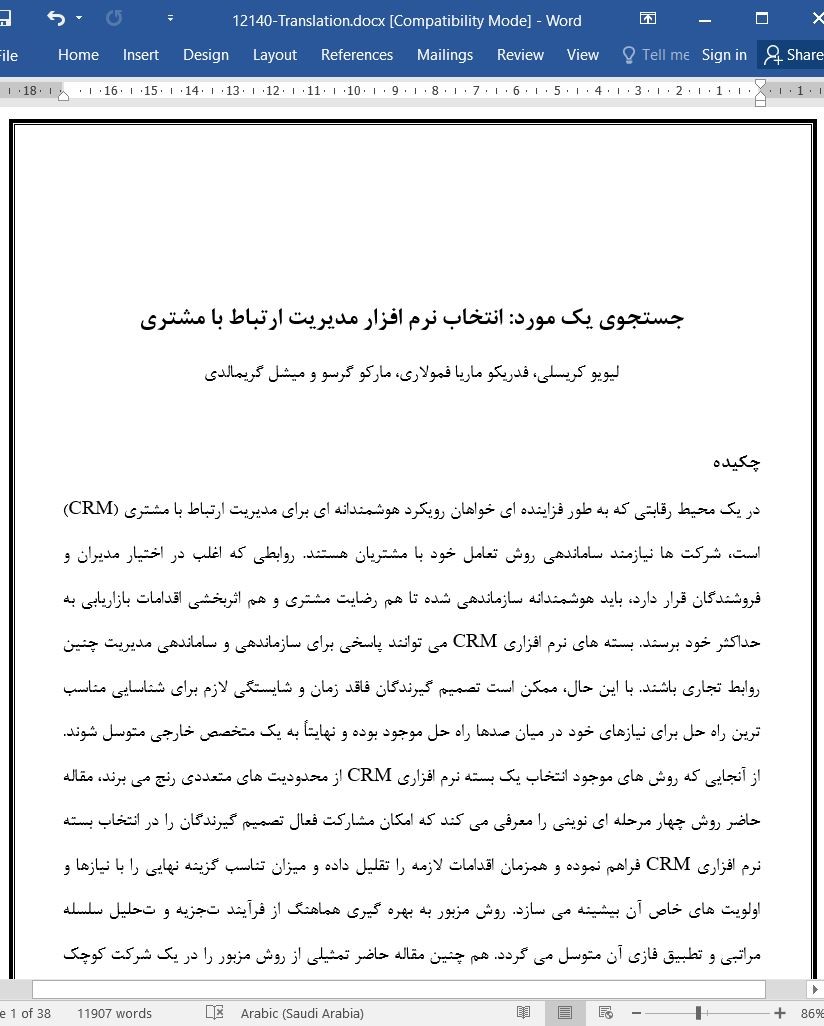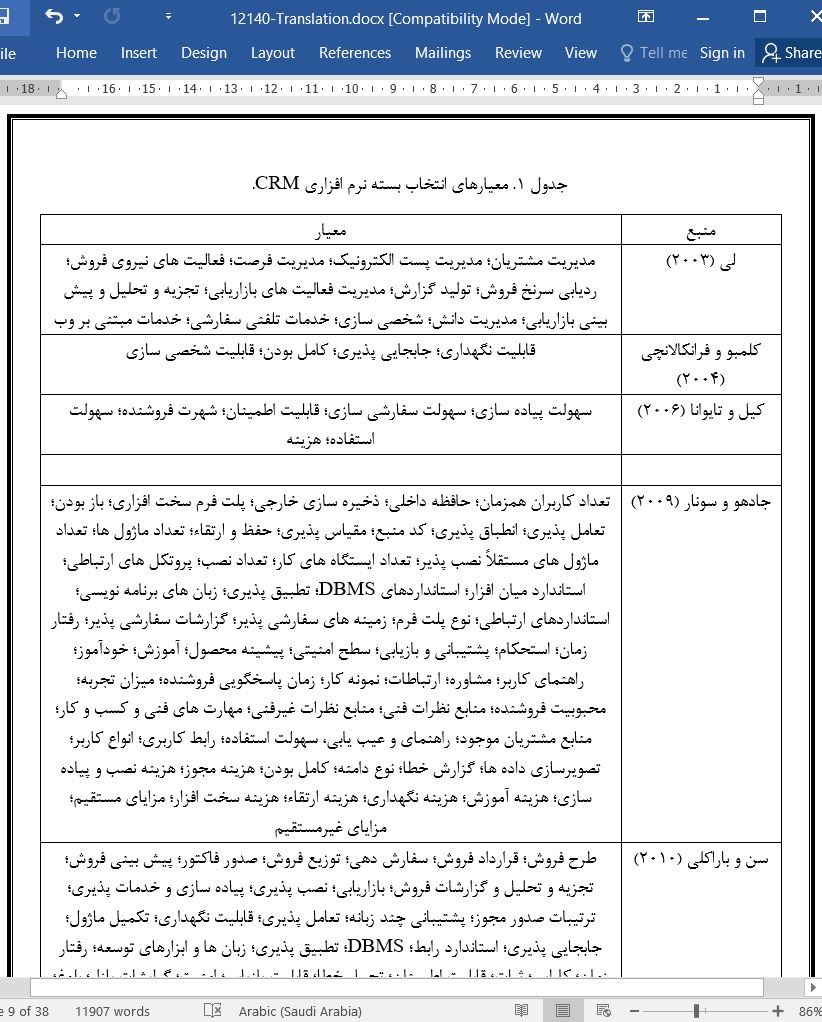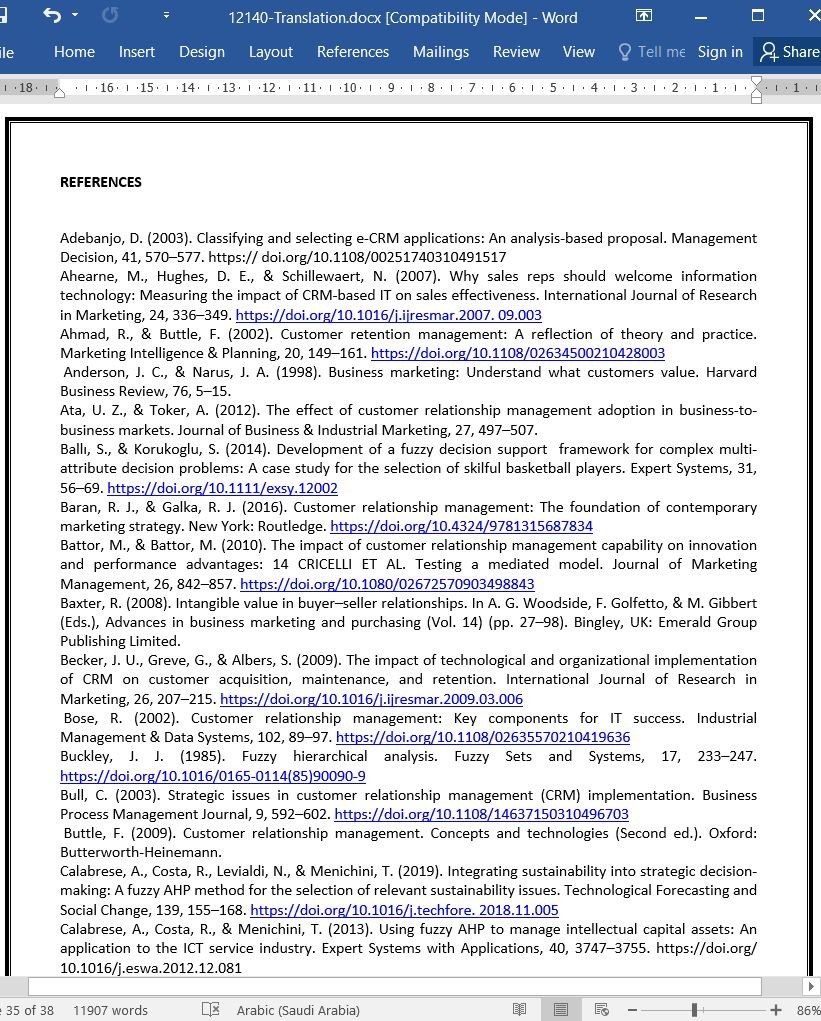
انتخاب نرم افزار مدیریت ارتباط با مشتری
چکیده
در یک محیط رقابتی که به طور فزاینده ای خواهان رویکرد هوشمندانه ای برای مدیریت ارتباط با مشتری (CRM) است، شرکت ها نیازمند ساماندهی روش تعامل خود با مشتریان هستند. روابطی که اغلب در اختیار مدیران و فروشندگان قرار دارد، باید هوشمندانه سازماندهی شده تا هم رضایت مشتری و هم اثربخشی اقدامات بازاریابی به حداکثر خود برسند. بسته های نرم افزاری CRM می توانند پاسخی برای سازماندهی و ساماندهی مدیریت چنین روابط تجاری باشند. با این حال، ممکن است تصمیم گیرندگان فاقد زمان و شایستگی لازم برای شناسایی مناسب ترین راه حل برای نیازهای خود در میان صدها راه حل موجود بوده و نهایتاً به یک متخصص خارجی متوسل شوند. از آنجایی که روش های موجود انتخاب یک بسته نرم افزاری CRM از محدودیت های متعددی رنج می برند، مقاله حاضر روش چهار مرحله ای نوینی را معرفی می کند که امکان مشارکت فعال تصمیم گیرندگان را در انتخاب بسته نرم افزاری CRM فراهم نموده و همزمان اقدامات لازمه را تقلیل داده و میزان تناسب گزینه نهایی را با نیازها و اولویت های خاص آن بیشینه می سازد. روش مزبور به بهره گیری هماهنگ از فرآیند تجزیه و تحلیل سلسله مراتبی و تطبیق فازی آن متوسل می گردد. هم چنین مقاله حاضر تمثیلی از روش مزبور را در یک شرکت کوچک ایتالیایی ارائه می نماید.
1. مقدمه
شواهد نشان دادند که پرورش رابطه با مشتریان از مهم ترین عوامل برای شرکت ها محسوب می شود (هیسلیپ و ریچاردسون، ۲۰۱۷؛ پالماتیر، اسکیر، هوستون، اوانز و گوپالاکریشنا، ۲۰۰۷؛ رودریگز، پترسون و کریشنان، ۲۰۱۸). این امر هم در شرایط کسب و کار - مصرف کننده و هم در شرایط کسب و کار - کسب و کار صدق می کند. با این حال، ممکن است روابط با مشتریان به صورت بی قاعده و بدون سازماندهی نظاممند فعالیت های اکتشافی و پس از فروش مدیریت گردد. بخش های ارزشمند اطلاعاتی که تقریباً هر شرکت در پایگاه داده های خود درباره مشتریان خویش گردآوری می نماید اغلب بدون استفاده می مانند (اشتاین، اسمیت و لنسیونی، ۲۰۱۳). اهمیت سیستم های مدیریت ارتباط با مشتری (CRM) به عنوان ابزارهای ضروری برای بهره برداری از این داده ها، افزایش فروش، بهره وری و رضایت مشتری در حال رشد بوده (به عنوان مثال، لی، هوانگ و سانگ، ۲۰۱9؛ رودریگز و همکاران، 2018؛ سلطانی و نویمیپور، 2016) و به شالوده استراتژی بازاریابی معاصر تبدیل شده است (باران و گالکا، 2016).
5. نتیجه گیری
مشتریان به طور فزاینده ای به ستاره قطبی شرکت های فعال در اغلب صنایع تبدیل شده و معیارهای رضایت مشتری به تدریج به اندازه معیارهای مالی مهم شده اند. این زمینه به خصوص برای بازار B۲B معتبر است که در آن شرکت ها نوعاً با مشتریان معدودی تعامل دارند که نیازمند توجه و فداکاری هستند. برای شرکت های فعال در بازار B۲B، یک رویکرد ساده برای CRM، عمدتاً متکی به شایستگی فروشندگان بوده و باعث از دست دادن فرصت های جالب توجه می گردد.
Abstract
In a competitive environment that increasingly awards a clever approach to customer relationship management (CRM), firms need to systematize the way they interact with their customers. The relationships that often lay in the hands of managers and salespeople need to be thoughtfully organized to maximize both customer satisfaction and the effectiveness of the marketing efforts. CRM software packages can be an answer to organize and systematize the management of such commercial relationships. However, decision makers may not have the time and the competencies to identify the most suitable solution for their needs, among the hundreds existing, and may ultimately resort to an external expert. Since the existing methods to select a CRM software package suffer from several limitations, this article introduces a novel four-step method allowing to actively involve the decision makers in the CRM software package selection, simultaneously minimizing the effort requested to them and maximizing the extent to which the final choice suits their specific needs and preferences. The method resorts to a coordinated use of the analytic hierarchy process and of its fuzzy adaptation. The article also presents an exemplification of the method in a small Italian firm.
1 INTRODUCTION
Evidence suggests that nurturing the relationships with the customers is among the most important factors to firms (Haislip & Richardson, 2017; Palmatier, Scheer, Houston, Evans, & Gopalakrishna, 2007; Rodriguez, Peterson, & Krishnan, 2018). This applies both to the business-to-consumer and to the business-to-business settings. However, relationships with customers may be managed in an unmethodical way, without systematically organizing prospecting and postsales activities. The valuable pieces of information that nearly every firm collects in their databases about their customers often remain poorly utilized (Stein, Smith, & Lancioni, 2013). Customer relationship management (CRM) systems are growing in importance as essential tools to exploit such data, enhancing sales, productivity, and customer satisfaction (e.g., Li, Huang, & Song, 2019; Rodriguez et al., 2018; Soltani & Navimipour, 2016), becoming the foundation of contemporary marketing strategy (Baran & Galka, 2016).
5 CONCLUSIONS
Customers are increasingly becoming the Polar Star of firms operating in the most various industries, with customer satisfaction measures that are gradually becoming as important as financial ones. This context is especially valid for the B2B market, in which firms typically interact with a few customers that demand much attention and dedication. For the firms operating in the B2B market, a naïve approach to CRM, mainly relying on the competence of the salespeople, can cause the loss of interesting opportunities.
چکیده
1. مقدمه
2. پیشینه نظری
2.1. CRMSP
2.2. انتخاب CRMSP
3. روش
3.1. مرحله ۱ - تجزیه و تحلیل شرکت
3.2. مرحله ۲ - انتخاب مجموعه ای از معیارها
الف. معیارهای کارکردی
ب. معیارهای فنی
ج. معیارهای کیفیت
د. معیارهای هزینه
3.3. مرحله ۳ – پیشغربال CRMSP
3.4. مرحله ۴ - انتخاب CRMSP
3.4.1. متغیرهای مرحله ۴
4. مطالعه موردی
4.1. مرحله ۱ - تجزیه و تحلیل شرکت
4.2. مرحله 2 - انتخاب مجموعه معیارها
4.4. مرحله ۴ - اننتخاب CRMSP
5. نتیجه گیری
منابع
Abstract
1 INTRODUCTION
2 THEORETICAL BACKGROUND
2.1 The CRMSPs
2.2 The selection of a CRMSP
3 METHOD
3.1 Step 1—Analysis of the firm
3.2 Step 2—Choice of a set of criteria
A Functional criteria
B Technical criteria
C Quality criteria
D Cost criteria
3.3 Step 3—CRMSPs prescreening
3.4 Step 4—Choice of the CRMSP
3.4.1 Variants to Step 4
4.1 Step 1—Analysis of the firm
4.2 Step 2—Choice of the set of criteria
4.3 Step 3—CRMSPs prescreening
4.4 Step 4—Choice of the CRMSP
5 CONCLUSIONS
REFERENCES
- اصل مقاله انگلیسی با فرمت ورد (word) با قابلیت ویرایش
- ترجمه فارسی مقاله با فرمت ورد (word) با قابلیت ویرایش، بدون آرم سایت ای ترجمه
- ترجمه فارسی مقاله با فرمت pdf، بدون آرم سایت ای ترجمه



